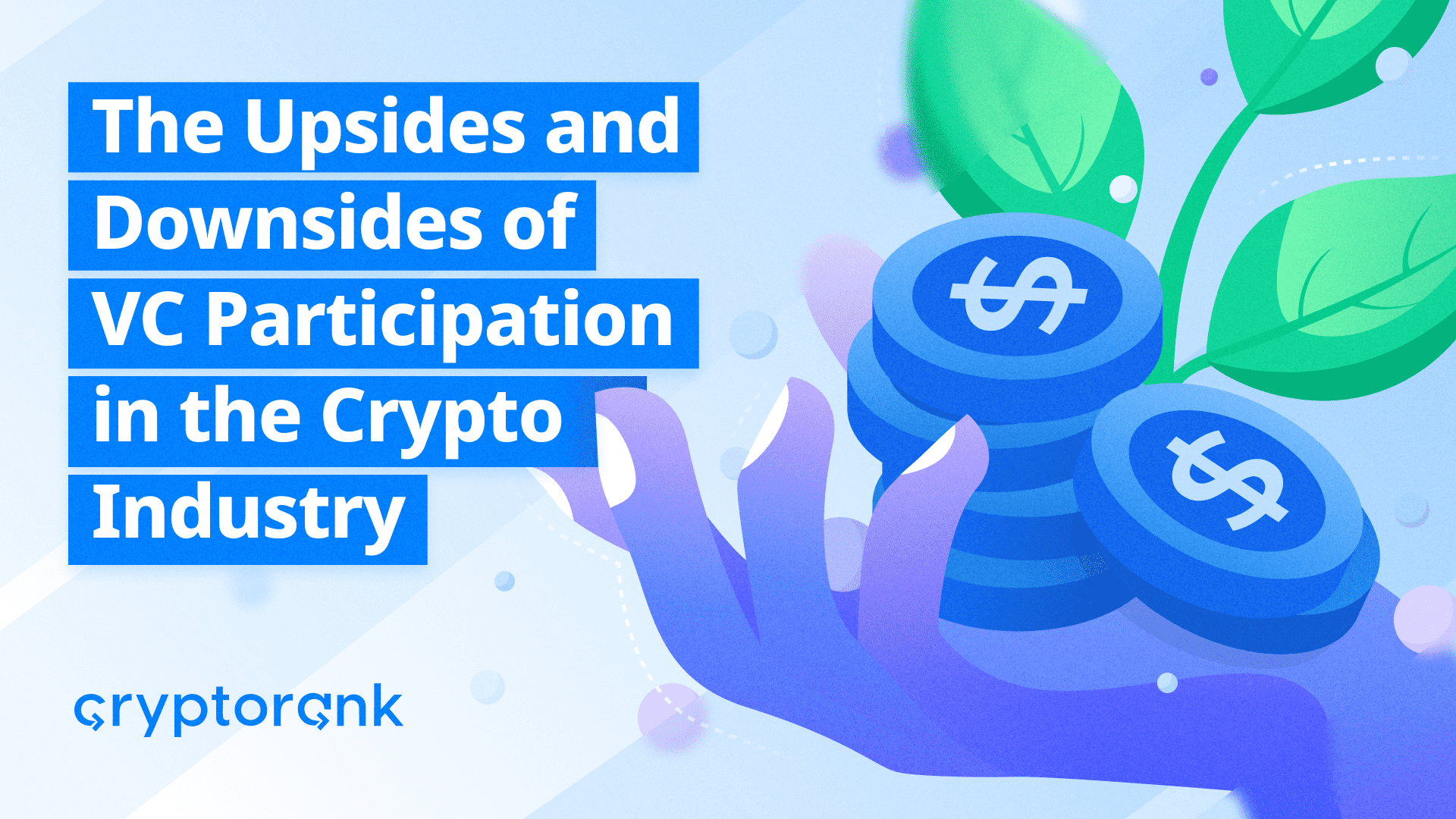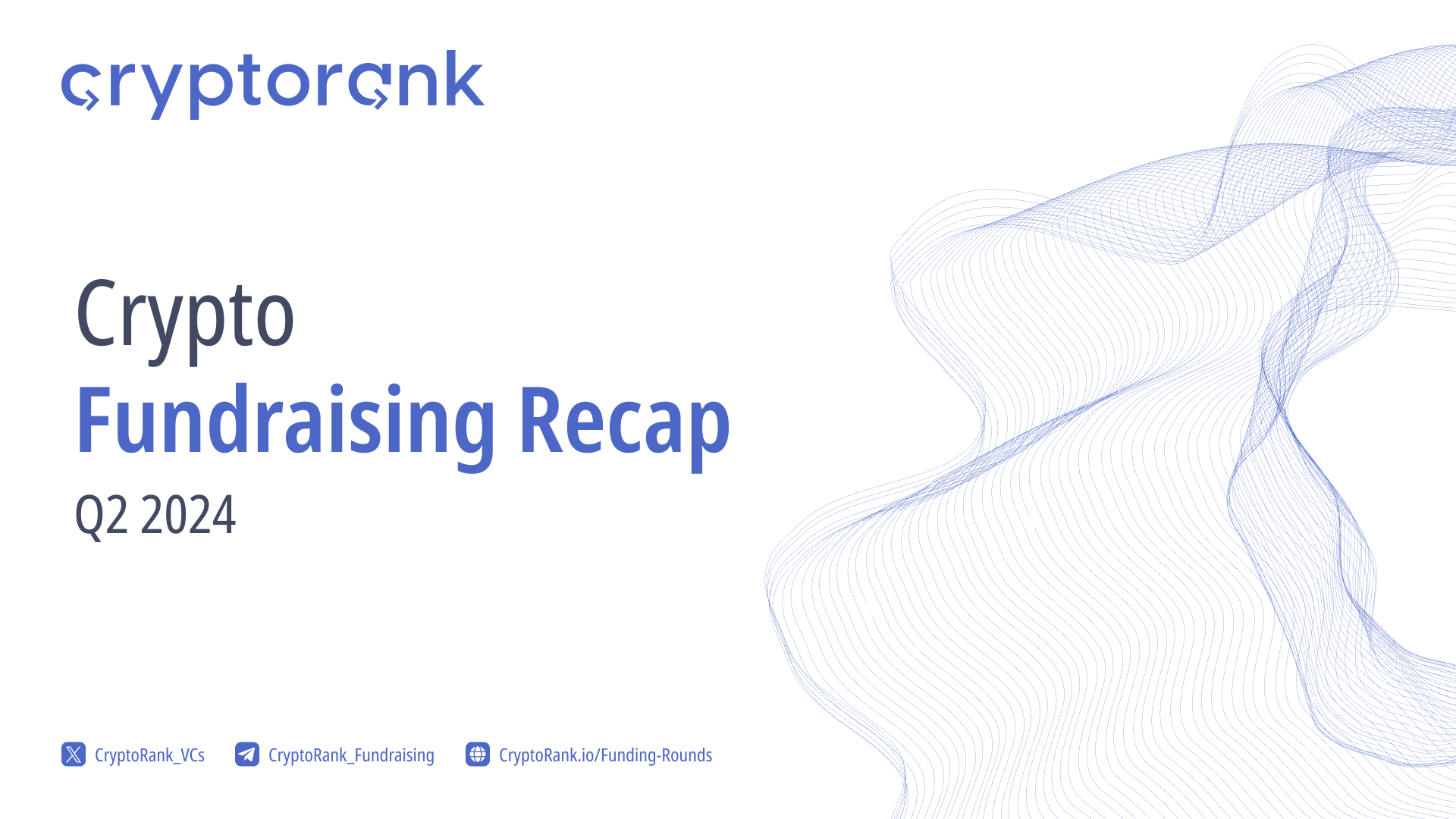The Upsides and Downsides of Venture Capital Participation in the Crypto Industry


Key Takeaways
-
Venture capital investment helps projects grow faster, secure credibility, and facilitate key partnerships for crypto and blockchain startups.
-
VC involvement leads to centralized control, misaligned interests, and loss of autonomy for crypto project founders.
-
VC participation complicates the regulatory landscape for digital assets, attracting increased government and financial authority scrutiny.
-
Crypto founders must balance VC funding benefits with potential risks to maintain control and autonomy.
-
The future of VC in crypto will likely shift toward decentralized, sustainable models prioritizing long-term growth over short-term gains.
The Upsides of VC Participation in the Crypto Industry
Capital Accessibility
The biggest upside of VCs in crypto is that they provide access to seed capital for projects during the early stages. They fill the funding gap by providing funding which is often difficult to come by as projects struggle to establish viability and worth through research and financial projections. Examples of successful VC-funded crypto projects include Ripple (funded by IDG Capital), Solana (supported by Andreessen Horowitz and Polychain Capital), and Coinbase (backed by Andreessen Horowitz). Funding helps crypto projects grow and scale faster.
Mentorship and Professional Expertise
Drawing from experience, VC firms provide strategic guidance on how crypto startups can navigate regulatory complexities, refine business models, and scale operations. 8 Decimal Capital, for example, backed Polkadot and facilitated its partnership with key industry players.
Andreessen Horowitz also helped Coinbase with compliance and expansion strategies. VCs provide hands-on support to help crypto projects mitigate risks and accelerate growth.
Partnership and Network
VC firms also help crypto projects secure critical partnerships and business opportunities by connecting portfolio companies with key industry players. Strategic connections unlock the potential for growth, ecosystem development, and user acquisition. A good example is Blockchain Capital and Standard Crypto’s backing of Aave which enabled the partnership with Polygon for faster and cheaper transactions on Aave on the Polygon Network. Union Square’s backing of CryptoKitties also helped it secure defining collaborations with leading gaming studios.
Validation and Credibility
VC backing enhances the reputation and appeal of startup crypto projects. VC’s backing proves to investors that the project has undergone due diligence and has serious growth potential. An example is Andreessen Horowitz's investment in Uniswap which increased investor credibility, stirred adoption and drove up the value of UNI tokens. Similarly, Compound, one of the leading lending protocols, was able to attract significant institutional investment and establish itself as an industry leader through backing by Paradigm. VC backing attracts retail funding by reducing perceived risk which drives mainstream adoption.
Accelerated Growth
VC backing speeds up growth by facilitating expansion and market entry. With VC backing, startups can hire the best talent to build desired infrastructure and achieve important milestones on their roadmap in record time. Through backing by Accel and Benchmark, Chainalysis grew up to 100% year over year. Blockchain development platform, Alchemy also scaled quickly to support over 70% of the top Web3 applications after backing from Pantera and Coinbase Ventures. VC backing improves growth pace, competitiveness, and product to market.
The Downsides of VC Participation in the Crypto Industry
Pressure for Quick Returns
One of the downsides of VC funding is their emphasis on swift returns which often forces projects to prioritize short-term gains at the expense of long-term profit. Portfolio companies are often forced to develop products faster, compromise on important features, or pivot into a less sustainable but profitable business model to deliver the 3x - 5x returns expected by VCs 5 - 7 years post-investment. Aggressive pursuit of returns could result in compromised value propositions, premature project launches, and hasty token launches.
Loss of Control
VC investment often leads to equity stake and influence over the direction and decision-making of the project, leaving founders on the sidelines. Differences between the vision of founders and investing VCs can spark conflicts. A remarkable example is the 2018 scuffle at crypto mining giant Bitman, fueled by disagreement between founder, Jihan Wu, and investors. Disagreement ensued between Tezos’s founders, Arthur Breitman and Kathleen, and VC backers in 2018. Balancing between original plans and VC expectations is often a complicated issue.
Misalignment of Interests
There is also a dissonance between crypto communities that value innovation and utility and VCs that aim to make multiple returns (ROI). The dissatisfaction from the community often escalates post TGE when massive backlash on social media, leading to fear and dumping of the tokens. The crypto community on Twitter criticized the airdrop distribution of Polyhedra Network and ZkSync in 2024 as unfair due to VC interests.
Market Volatility
VCs are not spared the downsides as volatility in the crypto markets often impacts their portfolio negatively. Downturns in the crypto market can send project valuations into a tailspin making business development efforts futile, while crippling fundraising efforts. During the 2018 bear market, for example, the valuation of the blockchain platform Protocol Labs recorded significant losses and had to cut its workforce by up to 21% amidst the market crash. DeFi protocol MakerDAO also saw a sudden revenue decline during the “Black Thursday” crash. VCs often have to deal with the high risk in the growing cryptocurrency market. VC firms have also received backlash for dumping tokens through massive post-TGE sales after the lockup period. A good example is the ICP token dump after the TGE in 2021. Dumping causes sudden fluctuation and volatility.
Regulatory Risks
Venture capital participation has also complicated the regulatory landscape for digital assets. Regulators have started paying more attention to VC-backed projects as they emphasize scalability and mainstream adoption. Government and financial authorities are also becoming increasingly concerned about consumer protection, systemic risks, and market stability. The attention from authorities is also intensifying because of the centralized nature of VC activities compared to the decentralized ethos of blockchain technology.
Balancing the Pros and Cons
Strategies for Founders
Founders must carefully think through the process, and weigh the benefits of VC funding against the risk of limited autonomy and control. They should strive for favorable terms like founder-friendly equity structures and milestone-based funding. They must limit their exposure and dominance of funding rounds by a single VC while ensuring a balance between project and VC goals.
Best Practices for VCs
VCs must understand and align their interest with the community interests of portfolio projects. Their investment should promote long-term sustainability over short-term gains. Their influence should be strategic rather than controlling and consist of actions that lead to the project’s ultimate success.
Case Studies
Some examples of successful VC partnerships are Compounds’s partnership with Coinbase Ventures and Paradigm and Uniswap's commitment to community-centered decisions despite significant VC involvement. The lessons learned from the Tezos’s governance struggle are also noteworthy.
Conclusion: A Peek Into the Future of Crypto VC Activities
VC participation in the crypto industry has its benefits and drawbacks. Although funding helps projects scale faster and secure trust for further investment, it comes with centralized control, misaligned interests, and regulatory challenges. VCs and founders must find a middle ground between funding, autonomy, and community interests.
Considering the downsides discussed, VCs of the future may largely shift towards decentralized and sustainable models, operating as DAOs instead of centralized private investors. The shift will help regulators gain further clarity and create better laws driving more capital into the crypto industry. Hybrid funding models that combine centralized and decentralized fundraising may also be potential paths for VCs.
Read More






 Accel
Accel Andreessen Horowitz (a16z crypto)
Andreessen Horowitz (a16z crypto) Blockchain Capital
Blockchain Capital Coinbase Ventures
Coinbase Ventures Paradigm
Paradigm